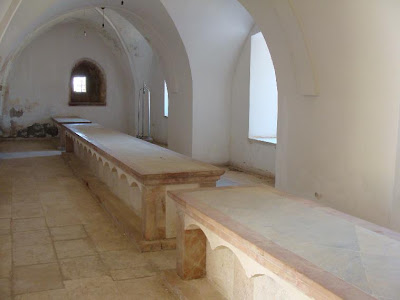In
a May post, I noted that I had the opportunity to see
Bernard Haitink lead the
Chicago Symphony Orchestra in an outstanding performance of Dmitri Shostakovich's
Symphony No. 4. Now it seems that I'll have a new way to keep the memory of that performance alive: Haitink's May 2008 reading of Shostakovich's 4th is now available in
a live recording from the Chicago Symphony's own CSO Resound label. I've already ordered a copy of the CD, and as much as I look forward to hearing a superlative performance again and again, this bit of news also leads me to reflect a bit more seriously on the historical and political context of Shostakovich's music.
The life of Dmitri Shostakovich illustrates the common dilemma faced by artists living in a totalitarian society. Recognized as one of the finest Russian composers of the 20th century, Shostakovich nonetheless had to tread carefully in his relations with a Soviet regime that served both as patron and persecutor. Shostakovich enjoyed periods of official favor, particularly when he showed himself willing to produce compositions on ostensibly patriotic themes. At other times, though, Shostakovich suffered the humiliation of public censure for writing works that failed to meet the approval of Soviet artistic censors. After Stalin personally denounced his music, Shostakovich was forced to withdraw his 4th Symphony shortly before its anticipated premiere; the first public performance of the work would only come twenty-five years later.
On a surface level, Shostakovich could hardly be considered a dissident. Especially in light of the official support he enjoyed at various points in his career, Shostakovich doesn't come off too well when contrasted with the likes of Andrei Sakharov or Aleksandr Solzhenitsyn - or even the cellist and conductor Mstislav Rostropovich, a onetime Shostakovich protégé who was forced into exile for his opposition to the Soviet regime. Still, Shostakovich weathered more than just occasional brushes with censorship - many of his works were banned for much of his lifetime, and he lost academic and artistic appointments for failing to toe the party line in cultural matters. Even if he never spoke out in the way that figures like Solzhenitsyn and Rostropovich did, Shostakovich still suffered for his commitment to artistic freedom.
Since Shostakovich's death in 1975, a lot of ink has been spilled over the question of whether or not the composer's work reveals him as a kind of secret dissident. Though the evidence is sparse and itself the subject of controversy, some scholars have proposed that Shostakovich offered many of his best-known musical compositions as subtly coded critiques of the Soviet regime. I'm in no position to assess the composer's actual intent, but I do agree that some of Shostakovich's works can easily be interpreted as anti-Soviet compositions. For me, it's hard to hear the jarring opening notes of Shostakovich's
Symphony No. 4 without thinking of Stalin's Great Terror - which happened to be in full swing when the work was written. It's also hard for me to hear
Symphony No. 5 - and particularly its plaintive, quietly mournful third movement - without thinking that this music must convey something of what its composer felt as he saw old friends imprisoned and killed and as his own artistic reputation was being shredded in the pages of
Pravda. Dedicated to the people of Leningrad,
Symphony No. 7 pays tribute to citizens battered by Soviet rule as well as invading German forces. On a more universal level, I believe that these works bear witness to the human spirit's desperate struggle to survive in the face of totalitarianism.
In an unexpected way, I believe my time in Chile helped me to appreciate the potential meaning of Shostakovich's work as a kind of universal protest against totalitarianism. In July, I heard the
Orquesta Sinfónica de Chile perform Shostakovich's
Symphony No. 5 under the direction of Michal Nesterowicz, an up-and-coming young conductor from Poland. In a newspaper interview published in the Santiago daily
La Tercera a couple of days before the concert, Nesterowicz explained that he regards Shostakovich's 5th as an expression of the struggle for freedom. Though Nesterowicz didn't say so explicitly, it's easy to imagine that his understanding of the work owes something to his own experience of life under a Communist government in his own country.
After reading Nesterowicz's words, I began to wonder whether a Chilean audience would hear echoes of their own national experience as they listened to Shostakovich's
Symphony No. 5. During the seventeen-year rule of General Augusto Pinochet, many Chileans suffered human rights abuses ranging from imprisonment without trial and summary execution to official censorship and forced exile. Though Chile has successfully completed the political transition to democracy, the country is still coming to terms with the cultural and social legacy of the Pinochet years. While acknowledging the great differences between the historical experience of Chileans under Pinochet and Russians (and others) under Soviet rule, I still get the sense that the music of Shostakovich has something important to say in both contexts. I probably ought to do a bit more thinking about this issue, and I'm sure I'll have the chance after my copy of the CSO/Haitink version of Shostakovich's 4th arrives in the mail. AMDG.

























